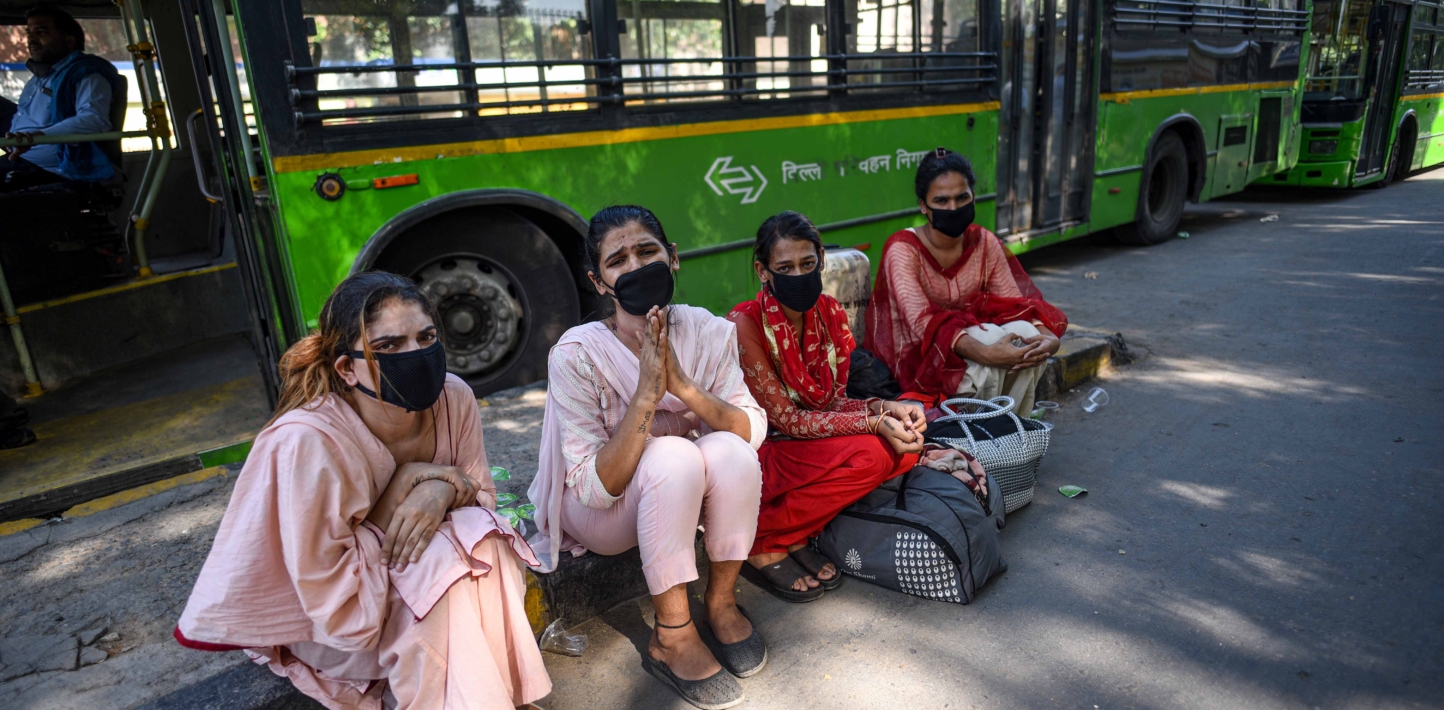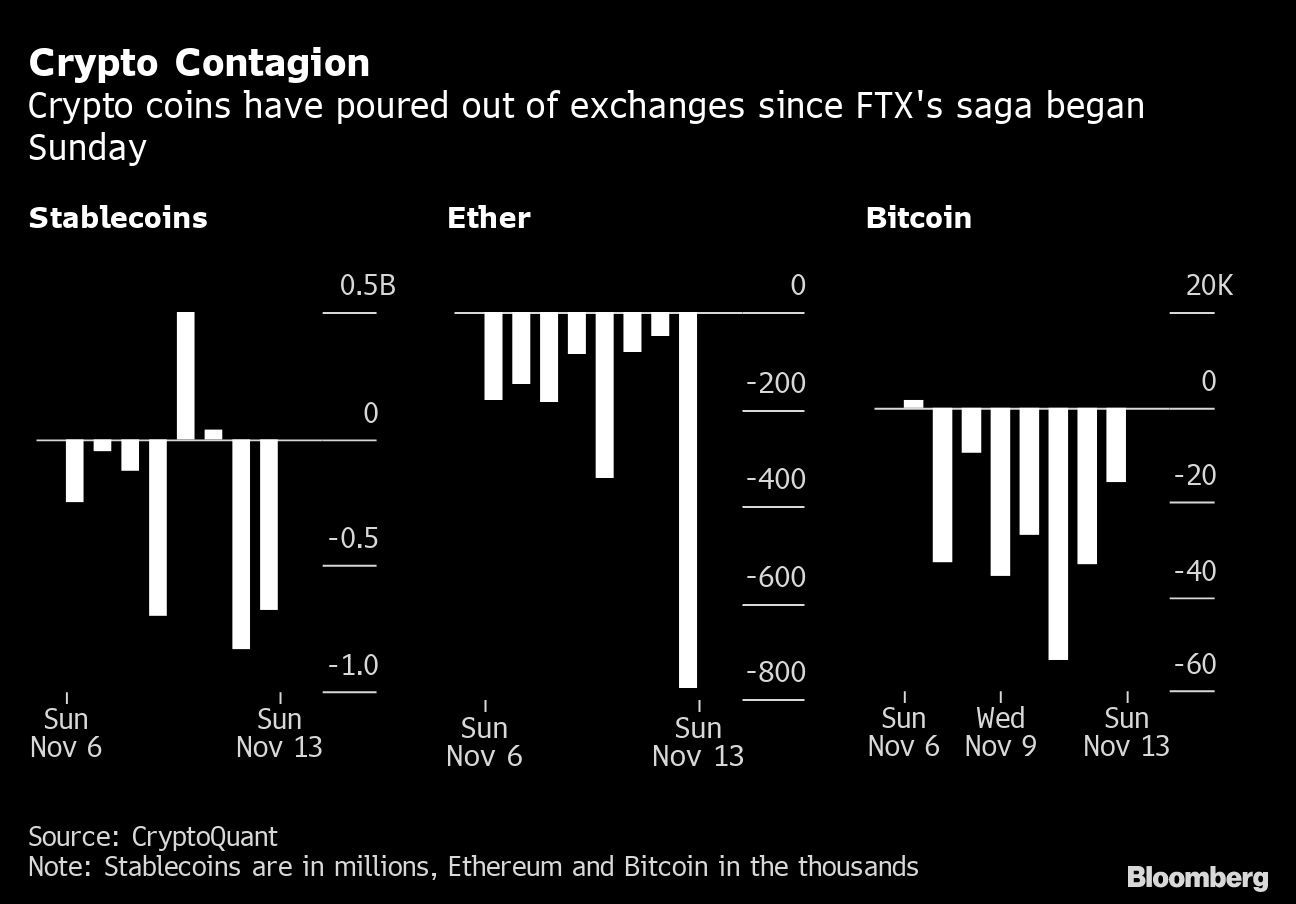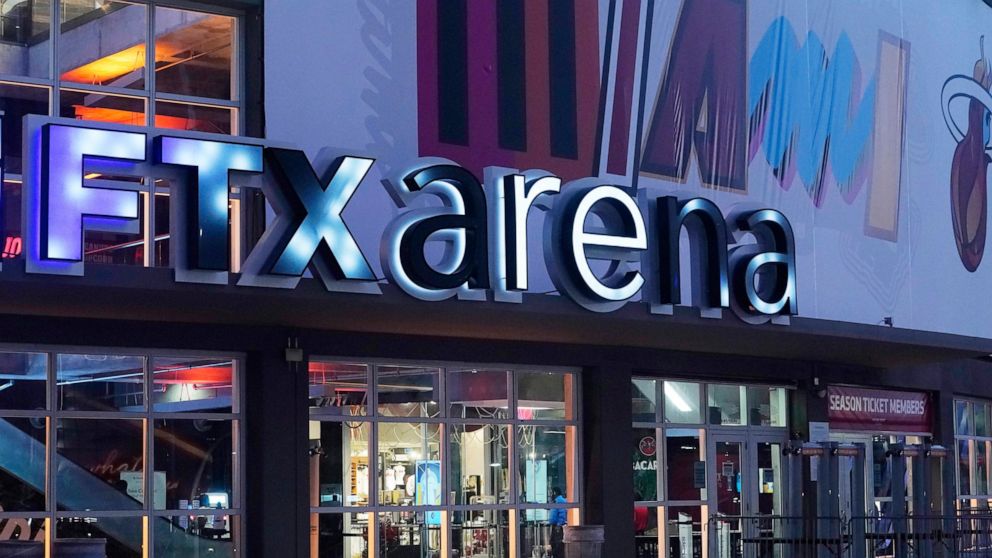Jeff Bezos said he plans to give away the bulk of his fortune during his lifetime in an interview that aired just hours before reports that Amazon.com Inc. plans to cut about 10,000 jobs.
Bezos, the e-commerce giant’s founder and the world’s fourth-richest person, will focus the bulk of his philanthropy on fighting climate change and supporting those who seek to unify people, the billionaire told CNN. It’s the first time he has committed to such a pledge.
Bezos, who’s worth $123.9 billion, according to the Bloomberg Billionaires Index, said in the interview that he’s also anticipating a recession and that his advice to small businesses is to hunker down and cut expenses.
“The economy does not look great right now,” he said, sitting alongside his partner Lauren Sanchez. “Things are slowing down. You’re seeing lay offs in many many sectors of the economy.”
Amazon’s own job cuts will primarily hit employees in corporate and technology positions and could start as early as this week, the New York Times reported Monday, citing people familiar with the matter that it didn’t identify. It would be the largest number of staff cuts in the company’s history.
This isn’t the first time Bezos has timed a big philanthropic announcement around a period of controversy. Last year, he sandwiched his 11-minute trip to the edge of space, which attracted criticism over his priorities, with news of hundreds of millions of dollars in gifts, including $200 million to the Smithsonian National Air and Space Museum.
Bezos, 58, has focused more attention on his philanthropy in recent years as he’s also assumed a much larger public role, acquiring the Washington Post newspaper in 2013 as well as luxury homes in New York, Los Angeles and Hawaii. A $500 million yacht he commissioned is under construction in the Netherlands, and he’s among those interested in bidding for the NFL’s Washington Commanders, possibly with music mogul Jay-Z as an investor.
For years Bezos largely stayed on the philanthropy sidelines and drew criticism for not signing the Giving Pledge, a promise by many of the world’s richest people to donate the majority of their wealth to charitable causes. Instead he focused on Amazon and funded Blue Origin, his for-profit space-exploration company.
But Bezos has increased the pace of his giving after stepping down as Amazon’s chief executive officer last year. He set his attention on climate change with his $10 billion Earth Fund, which also aims to help restore nature and transform food systems. Bezos has said he plans to distribute the $10 billion by 2030.
On Saturday, Bezos named Dolly Parton the latest recipient of his Courage and Civility award, handing the music legend $100 million to direct to any charities she chooses. He previously awarded similar amounts to chef Jose Andres, whose World Central Kitchen feeds people in disaster-stricken areas, and Van Jones, the founder of Dream.Org.
His ex-wife MacKenzie Scott has sent more than $14 billion to nonprofits since the two split in 2019, mostly focusing on smaller charities in the U.S. that are often overlooked by larger donors. In a blog post just hours after Bezos’s CNN interview aired, Scott -- who signed the Giving Pledge -- said she donated almost $2 billion to charities over the past seven months.
Tech companies are trimming staff and slowing hiring as they face higher interest rates and sluggish consumer spending in the U.S. and a strong dollar abroad.
The tech industry shed 9,587 jobs in October, the highest monthly total since November 2020, according to Challenger, Gray & Christmas Inc., a consulting firm that tallies job cuts announced or confirmed by companies across telecom, electronics, hardware manufacturing and software development.
In recent earnings reports, Alphabet Inc., Amazon.com Inc., Meta Platforms Inc., Microsoft Corp. and others fell short of projections, sending shares plunging and shaving hundreds of billions of dollars from their market valuations. Meta, for instance, has lost more than 67 per cent of its value so far this year.
Here’s a running list of who’s cutting jobs and pulling back on hiring.
Amazon
The e-commerce titan plans to cut about 10,000 jobs. The layoffs will likely target Amazon’s devices group, responsible for the Echo smart speakers and Alexa digital assistant, as well as the retail divisions and human resources, Bloomberg News reported.
In November, Amazon halted “new incremental” hiring across its corporate workforce.
Apple
The iPhone maker has paused hiring for many jobs outside of research and development, an escalation of its plan to reduce budgets heading into next year, according to people with knowledge of the matter. The break generally doesn’t apply to teams working on future devices and long-term initiatives, but it affects some corporate functions and standard hardware and software engineering roles.
Chime
The digital-banking startup Chime Financial Inc. is cutting 12 per cent of its staff, or 160 people. A spokesperson said the company remains well-capitalized and the move will position it for “sustained success.”
Dapper Labs
Dapper Labs Inc. founder and Chief Executive Officer Roham Gharegozlou said in a letter to employees that the company had laid off 22 per cent of its staff. He cited macroeconomic conditions and operational challenges stemming from the company’s rapid growth. Dapper Labs created the NBA Top Shot marketplace for nonfungible tokens, a digital asset class that has seen a steep drop in demand since the crypto market downturn.
Digital Currency Group
Cryptocurrency conglomerate Digital Currency Group embarked on a restructuring last month that saw about 10 employees exit the company. As part of the shake-up, Mark Murphy was promoted to president from chief operating officer.
Galaxy Digital
Galaxy Digital Holdings Ltd., the crypto financial services firm founded by billionaire Michael Novogratz, is considering eliminating as much as 20 per cent of its workforce. The plan may still be changed and the final number could be in a range of 15 per cent to 20 per cent, according to people familiar with the matter. Galaxy’s shares have plummeted more than 80 per cent this year, part of a rout for cryptocurrencies.
Intel
Intel Corp. is cutting jobs and slowing spending on new plants in an effort to save US$3 billion next year, the chipmaker said. The hope is to save as much as US$10 billion by 2025, a plan that went over well with investors, who sent the shares up more than 10 per cent on Oct. 28. Bloomberg News reported earlier that the headcount reduction could number in the thousands.
Lyft
Lyft Inc.’s cost-saving efforts include divesting its vehicle service business. It’s eliminating 13 per cent of staff, or about 683 people. The company had already said it would freeze hiring in the US until at least next year. It’s now facing even stiffer headwinds.
“We are not immune to the realities of inflation and a slowing economy,” co-founders John Zimmer and Logan Green said in a memo. “We need 2023 to be a period where we can better execute without having to change plans in response to external events — and the tough reality is that today’s actions set us up to do that.”
Meta
The Facebook parent is cutting 11,000 jobs, the first major round of layoffs in the social-media company’s history. Meta’s stock has plunged this year, and the company is trying to pare costs following several quarters of disappointing earnings and a slide in revenue. The reductions equal about 13 per cent of the workforce, and Meta will extend its hiring freeze through the first quarter.
“I want to take accountability for these decisions and for how we got here,” CEO Mark Zuckerberg said in the statement. “I know this is tough for everyone, and I’m especially sorry to those impacted.”
Opendoor
Opendoor Technologies Inc. said that it’s laying off about 550 employees — roughly 18 per cent of its headcount. The company, which practices a data-driven spin on home-flipping called iBuying, is coping with slowing housing demand because of higher mortgage rates.
Peloton
Peloton Interactive Inc. laid off 500 employees globally, or about 12 per cent of the workforce, in October. It was the fourth time this year the company has cut staff. Along with other expense reduction measures, Peloton said the move will help it reach the break-even point on cash flow by the end of fiscal 2023.
“I know many of you will feel angry, frustrated and emotionally drained by today’s news, but please know this is a necessary step if we are going to save Peloton, and we are,” CEO Barry McCarthy said in an October memo. “Our goal is to control our own destiny and assure the future viability of the business.”
Qualcomm
Qualcomm Inc. said that it’s frozen hiring in response to a faster-than-feared decline in demand for phones, which use its chips. It now expects smartphone shipments to decline in the double-digit percent range this year, worse than the outlook it gave earlier.
Salesforce
Salesforce Inc. is focusing on margins as demand for its software products slow. The company has cut hundreds of workers from sales teams as it looks to improve profitability. Since 2017, Salesforce had almost tripled its workforce.
Seagate
Seagate Technology Holdings Plc, the biggest maker of computer hard drives, said that it’s paring about 3,000 jobs. Computer suppliers, including Seagate and Intel, have been hard hit by a slowdown in hardware spending. Customers are sitting on a pile of extra inventory, hurting orders and weighing on Seagate’s financial performance, CEO Dave Mosley said. That necessitated cuts. “We have taken quick and decisive actions to respond to current market conditions and enhance long-term profitability,” he said.
Stripe
Payments company Stripe Inc., one of the world’s most valuable startups, is cutting more than 1,000 jobs. The 14 per cent staff reduction will return its headcount to almost 7,000 — its total in February. Co-founders Patrick and John Collison told staff that they need to trim expenses more broadly as they prepare for “leaner times.”
Twitter
The upheaval at Twitter has more to do with its recent buyout — and the accompanying debt — than economic concerns. But the company has suffered some of the deepest cuts of its peers right now. Elon Musk, who bought Twitter for US$44 billion, eliminated about 3,700 jobs by email. Musk also reversed the company’s work-from-anywhere policy, asking remaining employees to report to offices.
“Regarding Twitter’s reduction in force, unfortunately there is no choice when the company is losing over US$4M/day,” Musk tweeted on Nov. 4.
Upstart
Upstart Holdings Inc., an online lending platform, said in a regulatory filing it cut 140 hourly employees “given the challenging economy and reduction in the volume of loans on our platform.”








